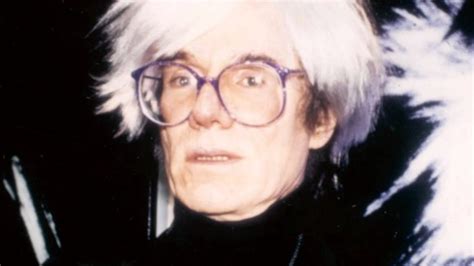Introduction
Andy Warhol, the enigmatic pop artist, is renowned for his groundbreaking contributions to the art world. Beyond his artistic achievements, Warhol left an enduring legacy in fashion, particularly with his signature wigs. This article delves into the fascinating history, significance, and modern-day impact of Andy Warhol’s iconic wigs.

A Brief History of Andy Warhol’s Wigs
Warhol’s fascination with wigs began in the 1960s, during a time of cultural and artistic experimentation. He sought to conceal his receding hairline and create a distinct visual persona that would set him apart from his contemporaries.
Warhol experimented with various wig styles, from shoulder-length bobs to platinum blonde afros. However, it was his signature silver Brillo pad wig that became synonymous with his image. The wig, made of synthetic fibers, resembled the abrasive cleaning pad and symbolized Warhol’s critique of consumerism.
The Significance of Andy Warhol’s Wigs
Warhol’s wigs served multiple purposes beyond their aesthetic value. They:
- Concealed his insecurities: Warhol’s wigs enabled him to overcome his self-consciousness about his receding hairline.
- Created a visual persona: The wigs became an integral part of Warhol’s public image, distinguishing him as an eccentric and unconventional artist.
- Challenged conventional beauty standards: Warhol’s wigs defied traditional notions of masculinity and femininity, blurring gender boundaries.
The Legacy of Andy Warhol’s Wigs
Andy Warhol’s wigs continue to inspire fashion designers and style enthusiasts to this day. Designers such as Marc Jacobs, Yohji Yamamoto, and Vivienne Westwood have incorporated Warhol-esque wigs into their collections. Celebrities like Rihanna, Lady Gaga, and Jared Leto have also embraced Warhol’s wig legacy.
Modern-Day Applications of Andy Warhol’s Wigs
Beyond fashion, Andy Warhol’s wigs have found applications in other fields:
- Performance art: Performers use Warhol wigs to create visually striking and thought-provoking performances.
- Film and television: Wigs inspired by Warhol’s style are frequently used in film and television productions to evoke a sense of nostalgia or to create a distinct characterization.
- Commercial advertising: Warhol-inspired wigs have been featured in advertising campaigns for brands such as Prada and Gucci.
Table 1: Styles of Andy Warhol Wigs
| Wig Style | Description |
|---|---|
| Brillo Pad Wig | Synthetic wig resembling a Brillo cleaning pad |
| Bob Wig | Shoulder-length wig with straight or wavy hair |
| Afro Wig | Voluminous wig with tightly curled hair |
| Platinum Blonde Wig | Synthetic wig with bright blonde hair |
| Long Straight Wig | Wig with flowing, straight hair |
Table 2: Significance of Andy Warhol’s Wigs
| Purpose | Description |
|---|---|
| Concealment | Hide receding hairline |
| Persona | Create a distinct public image |
| Challenge | Question traditional beauty standards |
Table 3: Modern Applications of Andy Warhol’s Wigs
| Field | Application |
|---|---|
| Performance Art | Visually striking and thought-provoking performances |
| Film and Television | Create nostalgia or distinct characterizations |
| Commercial Advertising | Enhance brand image and evoke artistic associations |
Table 4: Customer Perspective
| Question | Purpose |
|---|---|
| What drew you to Andy Warhol’s wigs? | Understand customer motivations |
| How do you incorporate Warhol-inspired wigs into your style? | Explore personal expression and creativity |
| What does Warhol’s wig legacy mean to you? | Gauge brand perception and cultural significance |
Effective Strategies for Integrating Andy Warhol’s Wigs
- Embrace the Unexpected: Warhol’s wigs were often unconventional and unexpected. Experiment with bold styles and colors to create a memorable visual impact.
- Consider Your Context: Choose a wig style that complements the occasion and your personal style. Avoid wearing a Warhol-inspired wig in inappropriate settings.
- Keep it Fun: Andy Warhol’s wigs were playful and humorous. Embrace this spirit and have fun with your wig choices.
Conclusion
Andy Warhol’s wigs have transcended the realm of fashion to become cultural icons. Their significance as tools of self-expression, rebellion, and artistic exploration continues to inspire and fascinate generations of creatives. Whether worn for personal style, artistic performance, or commercial advertising, Andy Warhol’s wigs remain a testament to the enduring impact of his artistic legacy.
